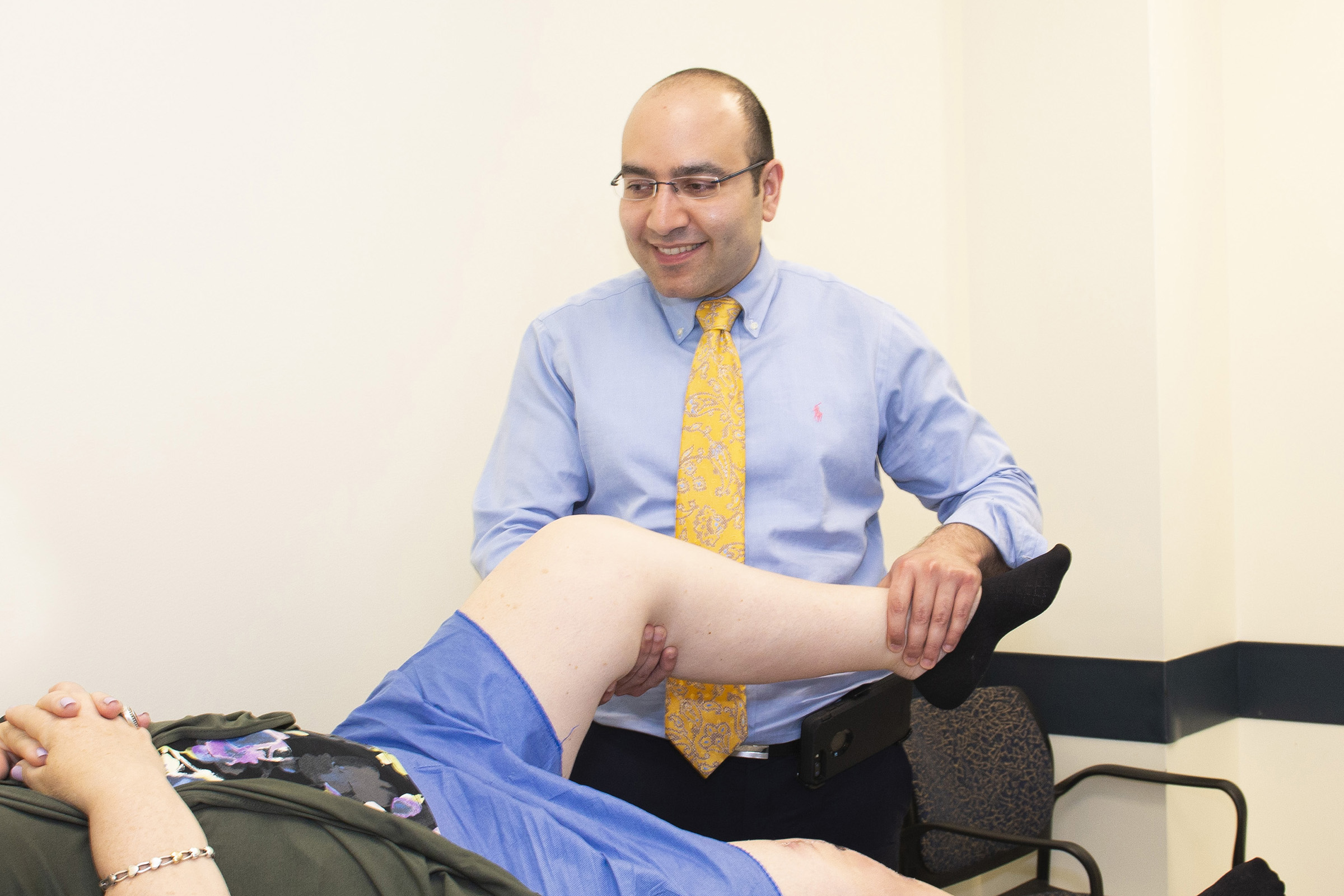Imagine coming to the hospital in the morning, getting your hip or knee replaced, and then going home that same day.
That dream is starting to become a reality for some UConn Health patients, thanks to the arrival of Dr. Mo Halawi, an orthopedic surgeon specializing in joint reconstructive surgery.
Patients are now achieving recovery milestones a lot quicker than ever before. — Dr. Mo Halawi
“Nearly 100 percent of my patients go home within 24 hours, and some now the same day,” says Halawi, who joined UConn Health in September 2017 and is spearheading same-day release for joint replacement patients. “The criteria for discharge are identical, whether a patient leaves on the day of surgery or several days later. The difference is the use of minimally invasive surgical techniques, regional anesthesia, blood-conserving strategies, opioid-sparing pain relief, and immediate mobilization. Patients are now achieving recovery milestones a lot quicker than ever before.”
According to Halawi, the ideal candidate for same-day total joint replacement is one who is independent, motivated, has a good support system, and has no major risk factors for surgical complications.
He believes it is important to first optimize patients’ health and prepare them for surgery.
“I take time in advance to get to know each patient as a whole,” he says. “Every patient is different. I encourage them to ask questions and bring loved ones with them to their appointments. Forming a team with patients and their loved ones is critical to successful recovery.”
Following surgery, Halawi tries to keep things as simple as possible. Patients get up on their feet right away, and a more minimalistic approach is taken for their medical care after surgery, with no IV medications, drains, catheters, dressing changes, braces, or laboratory tests. He is personally involved in every step of their care. Very rarely do patients get discharged to nursing homes or rehabilitation facilities.
“Patients are now achieving recovery milestones a lot quicker than ever before,” says Halawi, who calls patients at home to check on their recovery and progress. “I want to personally answer any questions they may have, and to provide them with reassurance.
Dr. Augustus D. Mazzocca, chair of UConn Health’s Department of Orthopedic Surgery, says the key to same-day hip and knee replacement is patient safety and a commitment to superior outcomes. Plus, patient-centered outcomes research is providing answers on how to improve patient care for hip and knee replacement.
“This requires tremendous teamwork from the various teams, including nursing, anesthesia, physical therapy, and administration,” Mazzocca says. “The energy put into the patient and their family is what make this a success.”
I cannot imagine anything better than taking patients with severe pain and poor quality of life and being able to transform their lives and see them happier and functional again. — Dr. Mo Halawi
Halawi notes that hip and knee replacement surgery is constantly evolving. “We need to always deliver safe, effective, efficient, and evidence-based medicine to our patients,” he says. “Soon more surgeons and patients will wish to say goodbye to conventional long hospital stays and recovery times.”
Halawi currently leads joint replacement research for UConn Health’s Orthopedics and Sports Medicine team. Improving outcomes after joint replacement surgery is one of his research interests. The goal is to identify risk factors that can be modulated, in order to minimize the risk of potential complications and maximize surgical success.
“I like to help make a difference in the lives of each of my patients,” he says. “I cannot imagine anything better than taking patients with severe pain and poor quality of life and being able to transform their lives and see them happier and functional again. That’s what drives me every day.”



